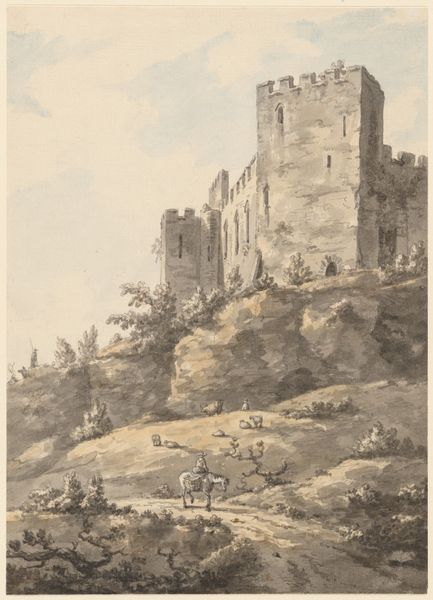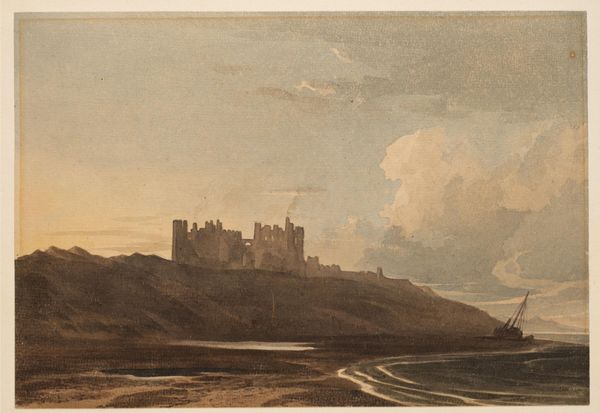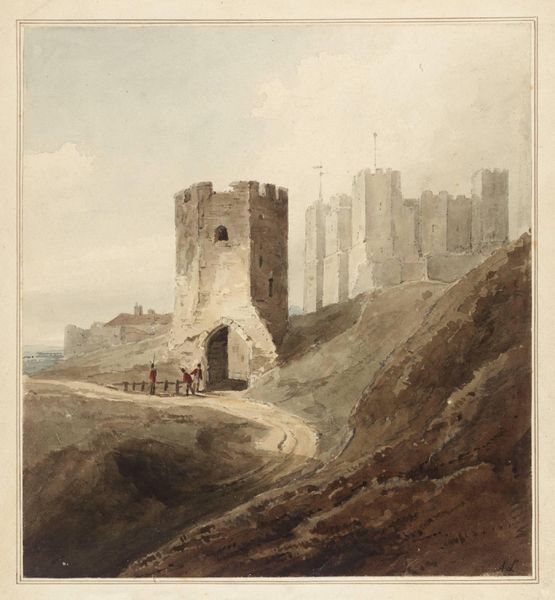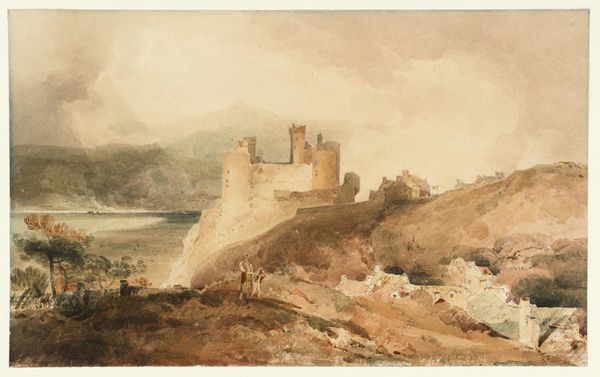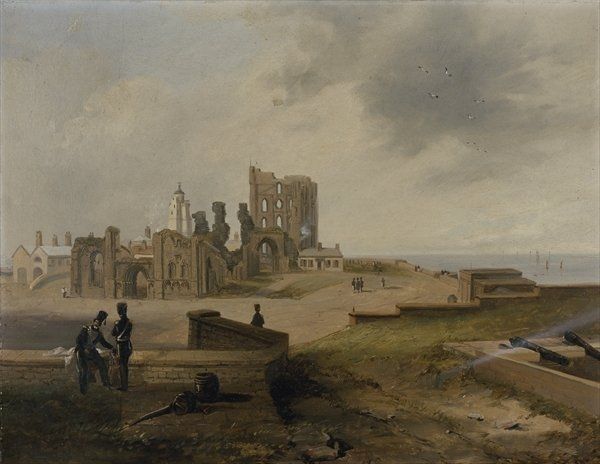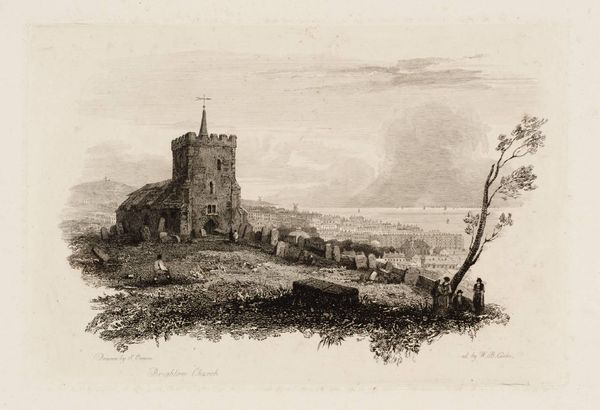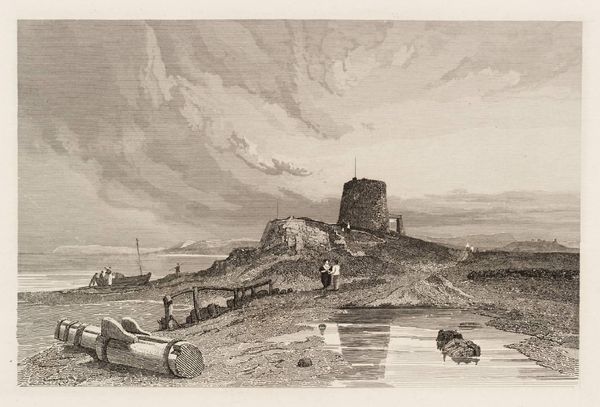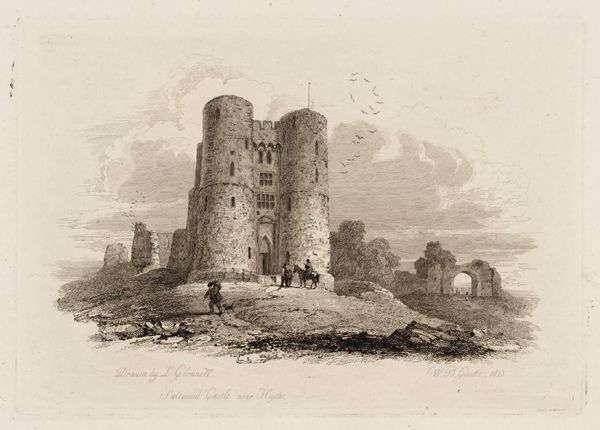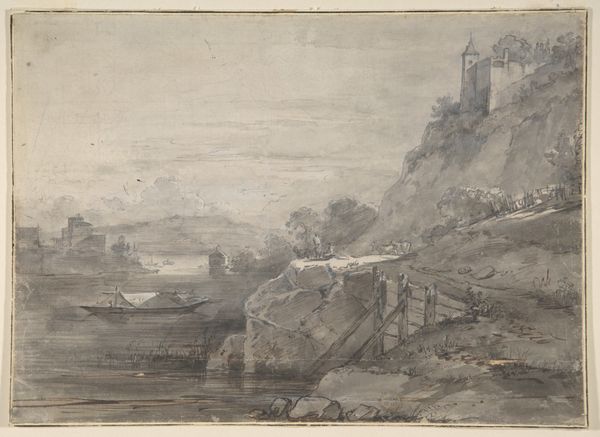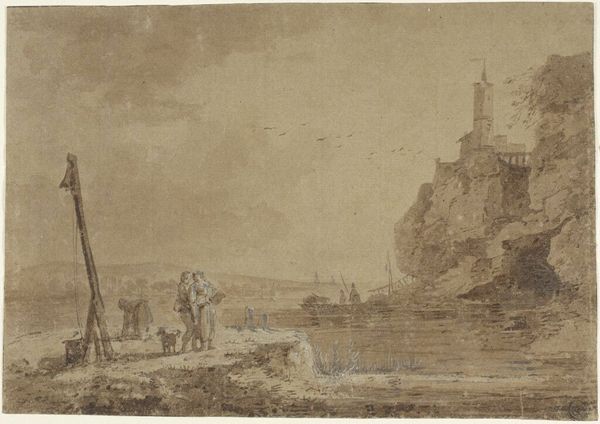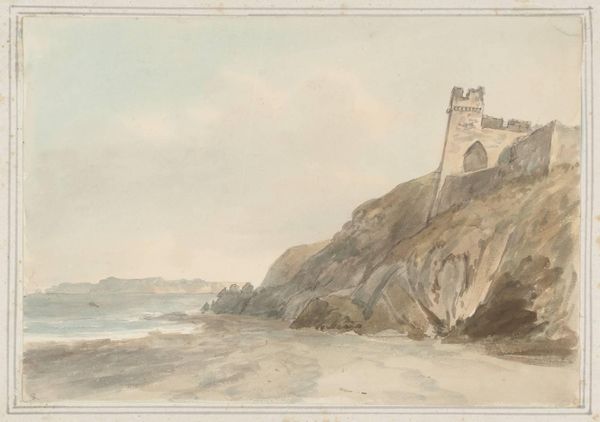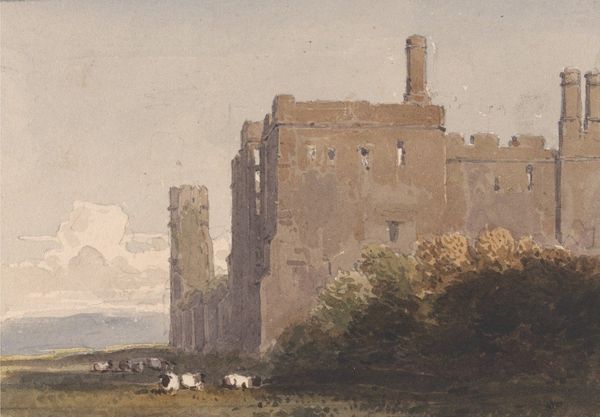
drawing, watercolor
#
drawing
#
landscape
#
charcoal drawing
#
watercolor
#
romanticism
#
watercolor
Copyright: Public Domain: Artvee
Curator: At first glance, I sense a lonely and somewhat foreboding mood about this watercolour scene. There’s something desolate in its soft rendering. Editor: And rightfully so. What you are looking at is a rendering by John Sell Cotman titled Aberystwyth Castle, which was sketched between 1796 and 1806. This watercolour, in somber tones, is steeped in the romantic aesthetic. Curator: Absolutely, the crumbling ruin dominating the scene evokes themes very central to the Romantic era—mortality, time's impact, nature's power. I’m also struck by the subdued palette and Cotman’s skilled handling of light to intensify this feeling of decay and the insignificance of human endeavor. Editor: Speaking of that, there's this procession, maybe a group, off in the distance near the middle. I mean, there they are, so small. Why did Cotman include those people—those tiny figures? Curator: I think that speaks precisely to what we were just discussing. Placing these small people within a grand, decaying scene invites contemplation of their fleeting presence compared to the long echoes of history and the vastness of landscape, you know? Remember that period witnessed social and political upheavals, casting long shadows on how artists viewed civilization itself. Editor: Right, it makes sense when framed as that. Almost like a visual poem meditating on humanity's fragile existence—all of which fits neatly in a museum setting and within Romanticism. But putting on my artist cap, what strikes me is how simply but powerfully he achieves this with colour, light, and composition alone. Very economical but still rich. Curator: His choice of watercolour—quick and spontaneous—perhaps also reflects this period's newfound appreciation for landscape as an embodiment of national identity and historical narrative. Castles weren't just old stones but representations of power and heritage. Editor: It's interesting to ponder how audiences then might’ve engaged differently. As we interpret, it changes too—each age asking its own questions of the past. Curator: Yes, these visual records enable ongoing dialogues. By exhibiting them we are continuing them. Editor: Nicely said. Thanks!
Comments
No comments
Be the first to comment and join the conversation on the ultimate creative platform.
